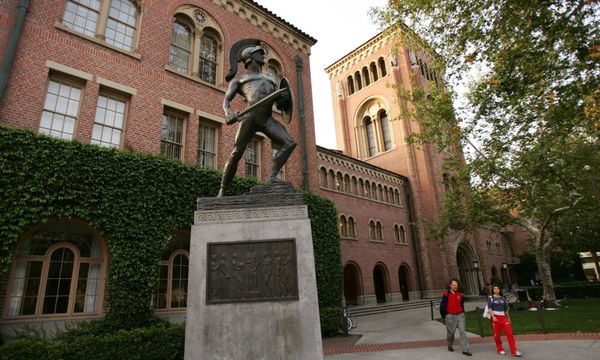
PROPERTY values across some of the Hunter's most popular COVID-19 boom suburbs have erased more than 40 per cent of their pandemic gains, new figures reveal.
Data compiled exclusively for the Newcastle Herald by leading property analyst group CoreLogic shows that house prices in 151 Hunter postcodes have dropped below their pandemic peak levels.
Four Hunter Valley suburbs, Aberdeen, Merriwa, North Rothbury and Scone, were the only areas to hold their pandemic boom values.
Cooks Hill or Newcastle was the worst performing postcode in terms of percentage growth across the Hunter, where the median house price increased 15.5 per cent since the start of the pandemic in March 2020 to $1,489,766.
The inner-city suburbs reached a pandemic peak in February this year with a median house price of $1,697,429, but slipped 12.2 per cent to December, or $181,751 in nine months, wiping more than 44 per cent off the pandemic gain.
Valentine took the biggest hit in Lake Macquarie, falling 15.3 per cent since February to a median house price of $1,090,043.
The waterfront suburb's prices skyrocketed 54.4 per cent from the beginning of the pandemic, to a median house price peak of $1,256,819 in February.
Despite wiping 15.3 per cent off that value in the past nine months, or $166,766, Valentine's house prices are up $256,676, or 30.8 per cent, since the start of the pandemic.
Real Estate Institute NSW Newcastle Hunter divisional chairman Wayne Stewart said prices were expected to keep falling amid continued interest rate rises.
Mr Stewart said property values across the Hunter and NSW experienced "unsustainable growth" over the past three years.
"I have been in this business 46 years and I've never seen anything like the growth we had," he said.
"Some of the areas with the greatest growth have fallen back to where they should be."
Salamander Bay house values pulled back the most in Port Stephens, falling 11.5 per cent below their peak value in April to a median of $947,734.
This was followed by houses in Corlette that dropped 10.4 per cent since May to a median of $1,042,465, Lemon Tree Passage that dropped 10 per cent over the same time to $622,286 and Nelson Bay that was down 8.3 per cent to $1,066,660.
Maitland and Cessnock suburbs faired better with most experiencing single-digit percentage price drops in most postcodes since peaking this year.
Branxton, Cliftleigh, Dungog, Greta, Kurri Kurri, Lorn and Pokolbin fell less than 5 per cent each.
CoreLogic head of research Tim Lawless said prices would keep falling with some suburbs expected to experience up to 20 per cent drops since the peak of the boom.
Mr Lawless said the Newcastle/Lake Macquarie market had fallen on average 8.8 per cent across the board following the peak, after a 48 per cent gain since March 2020.
The rest of the Hunter is down 5.3 per cent following a 54 per cent gain.
"The magnitude and speed of growth was unprecedented," Mr Lawless said. "We are surprised that the prices have not come down faster."
The Hunter Valley's median house price sits 45 per cent above what it was at the start of the pandemic, translating to an increase of $216,000. Newcastle and Lake Macquarie experienced the exact same gain of $216,000, but this represents a 35 per cent increase in median house prices.
Coalfields suburbs continue to hold the biggest percentage price gains including North Rothbury (73.2 per cent to $813,348), Pokolbin (64.8 per cent to $1,160,288), Millfield (64.1 per cent to $731,181) and Abermain (60.3 per cent to $570,926).

The lowest percentage gains were Cooks Hill (15.5 per cent to $1,489,766), Lambton (21.8 per cent to $927,051), Fletcher (23.4 per cent to $853,732), Georgetown (23.8 per cent to $811,676) and Raworth (24.1 per cent to $870,448).
Mr Stewart said the growth was unsustainable driven by record low interest rates, migration from capital cities and a shortage of 250,000 properties across NSW, which still exists.
He said typically growth periods run for about 12 months, the latest one lasted almost three years.
"We're going to see mortgagee in possession rates go up a bit," he said. "There will be people who have over extended and the interest rate rises will impact them."
Mr Lawless said once interest rates stabilised next year, prices were expected to do the same.
"We have just experienced the fastest rate-hiking cycle on record, 300 basis points in eight months," he said.
"Looking ahead over the next year we're looking at a stabilisation in prices or a subtle improvement in prices once interest rates settle."
Regional areas are still benefiting from a migration of people looking to leave capital cities, driven by affordability, flexible work arrangements and lifestyle.
At the start of the pandemic the Newcastle and Lake Macquarie median house price was 35 per cent lower than Sydney's.
The affordability margin has narrowed to 21.2 per cent due to stronger capital growth and smaller property price falls.
View the full list of postcodes here.
WHAT DO YOU THINK? We've made it a whole lot easier for you to have your say. Our new comment platform requires only one log-in to access articles and to join the discussion on the Newcastle Herald website. Find out how to register so you can enjoy civil, friendly and engaging discussions. Sign up for a subscription here.







